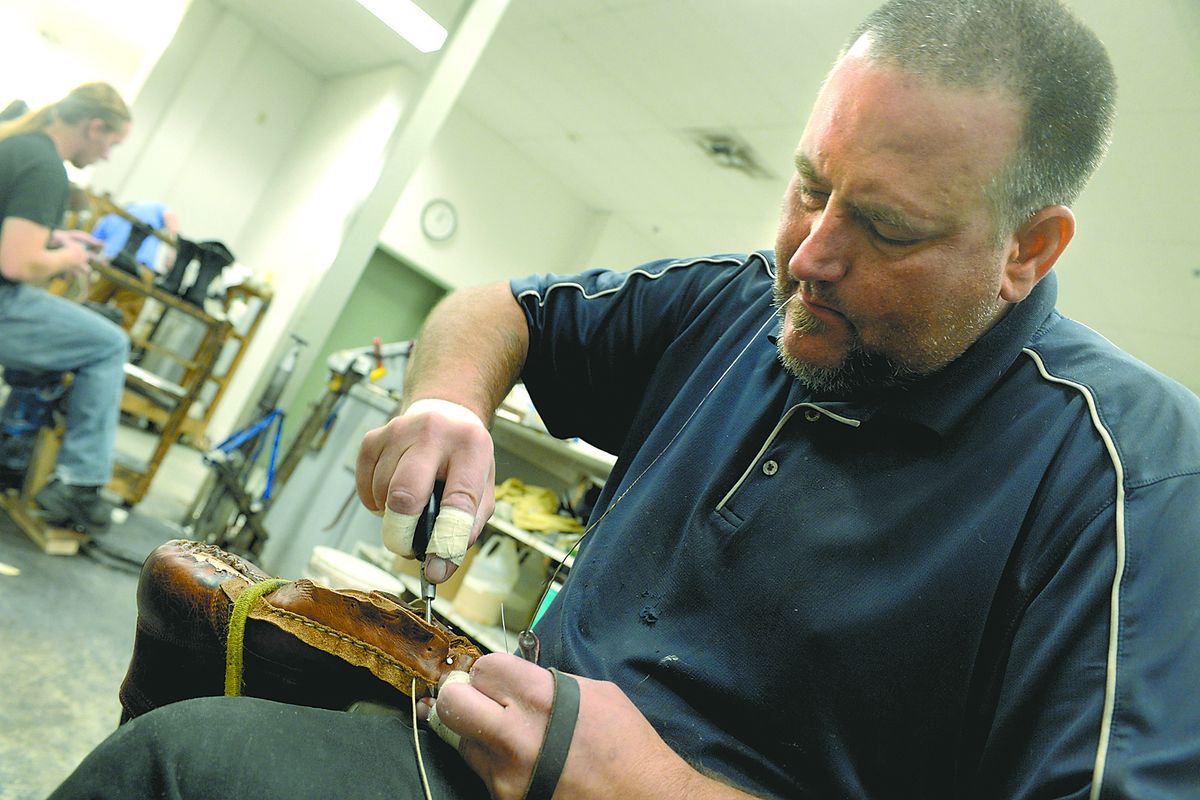White’s Boots owners confident about sale
Brothers behind White’s Boots, a Spokane mainstay since 1915, are confident the business will move forward in good hands

Gary March and his brother, Skip March, knew it was a big deal – selling a Spokane company that’s been a landmark and local legend for nearly 100 years.
But White’s Boots, which has done business in Spokane since 1915, was facing a new set of challenges: The March brothers were approaching retirement and the company needed a larger partner to help it continue to grow.
Two weeks ago they announced the sale of White’s Boots to LaCrosse Footwear, a Portland shoe manufacturer.
As one of the West’s premier producers of rugged outdoor work boots, “We’re in a niche market, a fairly small niche of the overall shoe market,” said Gary March, 61.
He and his 67-year-old brother will continue to guide the company in the short term while the transition occurs.
The brothers made the deal in large part to preserve the 118 White’s Boots jobs in the Spokane Valley, Gary March said.
“In the end it was a good decision” to sell to LaCrosse, he said. “LaCrosse has the same culture, a focus on making quality boots made in the USA, and they had a lot more resources to take this company to the next level.”
Terms of the sale were not disclosed.
LaCrosse and White’s were well-known to each other; officers from both companies often met at trade shows, March said.
The Portland company makes the Danner Boot line of products, which date to 1932, when they were originally made in Minnesota.
Unlike White’s, which makes every pair at its Spokane Valley factory, Danner now ships about two-thirds of its production overseas, said a LaCrosse spokesman.
LaCrosse’s own moment of truth came in 2012, when its owners sold the company to Tokyo-based shoe retailer ABC-Mart.
Kirk Layton, LaCrosse’s chief financial officer, said ABC-Mart gives guidance on how to improve boot sales in Japan and other Asian countries.
“For our U.S. operations, they’re hands-off owners,” Layton said.
The White’s Boots brand has earned widespread loyalty and LaCrosse has no plans to change how it makes boots or where they’re made, Layton said.
“They know what they’re doing,” Layton said. The only topic involving Spokane has been how to boost production at the Spokane factory, perhaps by opening a second production line, Layton said.
Founded in Virginia
White’s Boots was founded in Virginia in the 1850s. It relocated to St. Maries, Idaho, in 1902 and to Spokane in 1915.
After third-generation owner Otto White died in 1972, the company went through a succession of ownership changes.
In the 1980s, Skip March bought the business from the remaining White family owners. He focused on reconnecting the brand with footwear dealers around the country. Sales increased, with the boots available through the Spokane retail outlet and 500 dealers, mainly in the West.
A visit to White’s boot-making factory is in many ways a step back in time. Workers are grouped into sections, with some cutting leather and others sewing and adding heels, all with a focus on quality over speed. The factory turns out boots without a single power tool.
The company makes a standard set of boot sizes and types, but also will make custom boots for customers with specific foot needs.
Their price tag is steep; most styles start well above $400 a pair.
“Our customers don’t ask about the prices,” Gary March said. “They know what they want.”
Customers still are primarily outdoor workers, including smokejumpers, ranchers, miners, loggers and farmers, he said.
Often, a customer is buying the same type of boot his father and grandfather had, March said.
By avoiding the option of sending production overseas, the March brothers were forced to keep raising their prices. It was either that, or settle for lesser-quality materials and cheaper labor, Gary March said.
“We decided to stay focused on quality first. That’s been the reason for our success,” he said.
Raw material prices seldom hold steady. White’s buys about 28,000 square feet of tanned leather each month from a Wisconsin tannery; the price White’s pays today is at its historic high, March said.
Boots popular in Japan
One market where both Danner’s and White’s boots have been successful is Japan.
Authentic, high-quality U.S.-made products sell for a premium there. Boots in particular have grabbed a solid foothold with Japanese customers, Layton said.
Will Pennartz, senior marketing manager for Danner, said American boots have become a fashion statement in Japan. That trend has led LaCrosse to introduce hybrid boots that are more fashionable than functional, he said.
White’s has done the same thing, adding a modified 5-inch leather boot, the Semi-Dress. People who buy it are not hauling logs, March said. They sell for over $400 in this country but go for around $850 a pair in Japan – with import duties adding somewhat to that cost, he said.
Layton said ABC-Mart was interested in White’s because of the product’s appeal in Japan, and because it believes the Spokane company can expand sales in Asia and across North America.